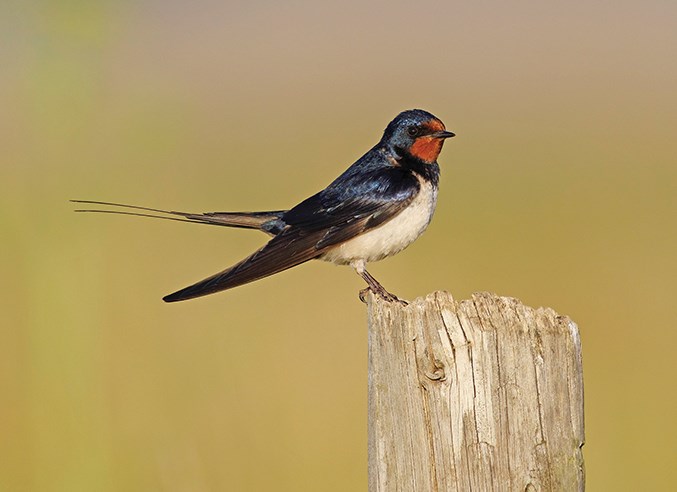Approximately 60 species of birds arrive on the Sunshine Coast to spend the summer with us, taking advantage of the warm weather and abundant food in the form of insects, fruits and seeds. Continent-wide, it is estimated that from 5-7 billion birds cross the Canada-U.S. border in the fall as they fly south from their breeding grounds to more temperate winter quarters. Where do they all go to spend the winter?
Broadly, our local species have four different options to winter: 1) anywhere south of the Sunshine Coast, including as close as the Lower Mainland 2) coastal areas of the U.S. Pacific states, especially California 3) Mexico and Central America 4) South America.
Robins might be an example of the first option, as they are common in the Vancouver area in winter, but uncommon on the Sunshine Coast. Many birds of a wide variety of species utilize the second option as coastal areas of the Pacific states are mild and frost-free and the birds can make an easy living without doing long, dangerous and exhausting migrations twice a year. Examples of these species include turkey vulture, spotted sandpiper, band-tailed pigeon, house wren, cedar waxwing, various warblers, various sparrows , brown-headed cowbird and goldfinch.
Many of the species that move south to Mexico and Central America are insectivores, dependent on an uninterrupted supply of insects, otherwise they will perish. These include some of our commonest and most familiar summer birds, including all of the flycatcher family, swallows, swifts, thrushes, vireos, most of the warblers, western tanager, and black-headed grosbeak. Rufous hummingbirds are part of this group as they winter in Mexico.
A few of our summer birds are true long-distance migrants, flying all the way to South America to spend the winter months. Olive-sided flycatcher, western wood peewee, purple martin and barn swallow are in this group, and common nighthawks and red-eyed vireos winter in Amazonia.
Our champion long-distance migrants are two shorebird species, pectoral sandpiper and Baird’s sandpiper that breed in the Arctic, and pass through the Sunshine Coast in their fall migration en route to southern South America, mainly the Pampas of Argentina. One other species deserves mention – a diminutive shorebird, the red-necked phalarope, winters pelagically (at sea) off South America.
To all of these species, we wish you a safe winter vacation and we hope to see you again next spring and summer. To report your sightings or questions contact [email protected] or 604-885-5539. Good Birding.



